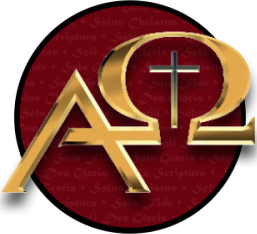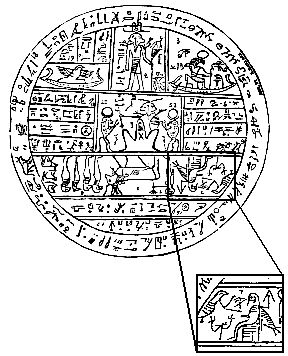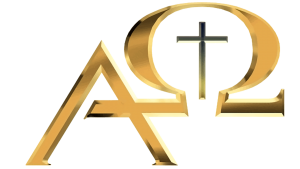An Examination of Joseph Smith’s “Explanation” of Facsimile #2 in the Book of Abraham
In 1835 Michael H. Chandler arrived in Kirtland, Ohio. In his horse-drawn wagon he carried four Egyptian mummies. Along with the mummies were included displays of the papyri rolls found on the mummies themselves. Joseph Smith, the Mormon Prophet, was fascinated by Chandler’s exhibit, so much so that his fledgling Church purchased the entire display from Chandler for a large sum of money: $2,400.00. Joseph Smith said:
Soon after this, some of the Saints at Kirtland purchased the mummies and papyrus…and with W. W. Phelps and Oliver Cowdery as scribes, commenced the translation of some of the characters or hieroglyphics, and much to our joy found that one of the rolls contained the writings of Abraham, another the writings of Joseph of Egypt, etc…(Documentary History of the Church, 2:236, emphasis added).
It should be remembered that at this time the study of Egyptian was, on a scholarly level, in its infancy. Smith was claiming to be able to translate what was, for all practical purposes, an unknown language. Of course, he had claimed this same ability in translating the Book of Mormon, which was said to have been written in “Reformed Egyptian.” That Smith was indeed claiming to translate in the normal sense of the term can be seen from his own words:
The remainder of this month, I was continually engaged in translating an alphabet to the Book of Abraham, and arranging a grammar of the Egyptian language as practiced by the ancients (DHC 2:238).
Over the next nine years Smith continued to work on his translation of the Book of Abraham. The work was included in the Pearl of Great Price when it was accepted as Scripture in 1880.
The Book of Abraham is unique amongst the books of LDS Scripture: it is the only book that contains illustrations in the form of three “Facsimiles,” each with an “Explanation” provided by Joseph Smith. Since the actual papyri were thought lost (some of the original papyri were found in 1967 and turned over to the LDS Church), the “Facsimiles” provided the only means of testing Joseph Smith’s translation, and his understanding of the documents that were before him.
In this small tract we cannot discuss all the evidence that now exists regarding the Book of Abraham, the papyri that have been found, and the various explanations put forward by defenders of Joseph Smith. Instead, we wish to look at just one aspect of the Book of Abraham, Facsimile 2 (found on the front of this tract), and even more specifically, one section of this drawing and what it really means.
 Pearl of Great Price, marked and explained by Joseph Smith as figure 7:
Pearl of Great Price, marked and explained by Joseph Smith as figure 7:
Represents God sitting upon his throne, revealing through the heavens the grand Key-words of the Priesthood; as, also, the sign of the Holy Ghost unto Abraham, in the form of a dove.
Is this indeed a representation of the one true God sitting upon His throne revealing the grand Key-words of the priesthood? Was Joseph Smith a man ahead of his time, able to decipher Egyptian writings in a time when scholarship was just starting to get a clue on the topic?
The object that Joseph Smith included in the Book of Abraham is, in reality, a “hypocephalus,” a common item of Egyptian funeral literature (all of the facsimiles in the Book of Abraham are drawn from common Egyptian funerary documents). It was placed under the person’s head, and was to aid them in making the journey through the netherworld by bathing their bodies in light. Many examples of this kind of hypocephalus are to be found. One of the many pagan gods pictured in this hypocephalus is shown above as it appears in the current edition of the LDS Scriptures. Egyptologists tell us that this is the god “Min.” Min is an “ithyphallic god,” that is, a sexually aroused male deity, as the picture clearly indicates. Min is the god of the procreative forces of nature. Joseph Smith told us that the Egyptian god Min was in point of fact the one true God.
 And what is Min doing? Joseph tells us that he is revealing the grand Key-words of the priesthood, with the sign of the Holy Ghost in the form of a dove before him. In reality, he is holding up the “divine flail” in one hand and is being approached by the figure Joseph Smith identified as the Holy Ghost in the form of a dove. In point of fact, Joseph’s hypocephalus was damaged at the border so that only the head of the “dove” was visible. So, Joseph had to restore the picture. Did he do so correctly? No, he did not. The figure to the right provides us with the proper scene from another hypocephalus (Leyden AMS 62). The being that is approaching Min is not the Holy Ghost in the form of a dove; it is yet another ithyphallic figure, specifically, a serpent, probably the Egyptian God Nehebka, presenting to Min the wedjat- eye, the symbol of good gifts.
And what is Min doing? Joseph tells us that he is revealing the grand Key-words of the priesthood, with the sign of the Holy Ghost in the form of a dove before him. In reality, he is holding up the “divine flail” in one hand and is being approached by the figure Joseph Smith identified as the Holy Ghost in the form of a dove. In point of fact, Joseph’s hypocephalus was damaged at the border so that only the head of the “dove” was visible. So, Joseph had to restore the picture. Did he do so correctly? No, he did not. The figure to the right provides us with the proper scene from another hypocephalus (Leyden AMS 62). The being that is approaching Min is not the Holy Ghost in the form of a dove; it is yet another ithyphallic figure, specifically, a serpent, probably the Egyptian God Nehebka, presenting to Min the wedjat- eye, the symbol of good gifts.
The single LDS scholar who has written the most on the Book of Abraham, Dr. Hugh Nibley, has written of Min:
As the supreme sex symbol of gods and men, Min behaves with shocking promiscuity, which is hardly relieved by its ritual nature…His sacred plants were aphrodisiacal…and he is everywhere represented as indulging in incestuous relationships with those of his immediate family; he had the most numerous and varied religious entourage of all the gods, consisting mostly of his huge harem…The hymns, or rather chanting of his worshippers were accompanied with lewd dancing and carousing…to the exciting stimulus of a band of sistrum-shaking damsels (Abraham in Egypt, p. 210).
It must be remembered that Joseph Smith said that this figure represented God sitting on His throne! Incredible as it may seem, intelligent, well-read LDS are fully aware of the true nature of the hypocephalus, including the presence of Min and Nehebka (the vast majority of LDS, however, are not). How do they explain this? Mormon Egyptologist Michael Dennis Rhoades said,
Joseph Smith mentions here the Holy Ghost in the form of a dove and God ‘revealing through the heavens the grand key-words of the priesthood.’ The procreative forces, receiving unusual accentuation throughout the representation, may stand for many divine generative powers, not least of which might be conjoined with blessing of the Priesthood in one’s posterity eternally (BYU Studies, Spring 1977, p. 273).
In other words, since the God of Mormonism is sexually active, begetting children in the spirit-world (indeed, God’s power is often described by Mormons as being made of the power of the priesthood and the power of procreation), and Min is obviously sexually active as well, this then is the “connection.”
We believe that Joseph Smith was utterly ignorant of what was represented in the Egyptian papyri that lay before him. Incapable of translating the figures, he made things up as he went along, claiming God’s direction and inspiration as his guide. In the process he demonstrated his own inability as a “prophet, seer and revelator,” for he grossly misidentified each of the items not only in this Facsimile, but in the other two as well.
Joseph Smith’s defenders today seek to find any connection whatsoever between LDS belief and Egyptian religion, even to the point of seeing in the sexually aroused Min a picture of God upon His throne. But to grasp at this straw is to ignore the Biblical testimony to the one true God. Isaiah saw God upon His throne in Isaiah 6:1-10, but instead of an incestuous god, surrounded by lewd dancing girls, the angels surrounded His throne and cried, “Holy, holy, holy.” God describes the gods of Egypt as “idols” that tremble before him (Isaiah 9:1); these false gods will literally be captured by God in His wrath (Jeremiah 43:12). God reveals the worship of these gods to be an abomination that brings His wrath (Jeremiah 44:8), and mentions one Egyptian god by name in speaking of the punishment he will bring against Egypt (Jeremiah 46:25). Those who worship such gods are “defiled” in God’s sight (Ezekiel 20:7-8). The Bible has nothing but contempt for the gods of Egypt, which would include the abominable figure of Min, identified by Joseph Smith as his God.
We will gladly admit that there is a similarity between the pagan god Min and the Mormon doctrine of God developed in the later years of Joseph Smith’s life. What is equally clear is that the God of the Bible is not similar to either Min, nor the LDS God. As God Himself said:
“To whom will you compare me?” Isaiah 40:25
Tags: mormonism


